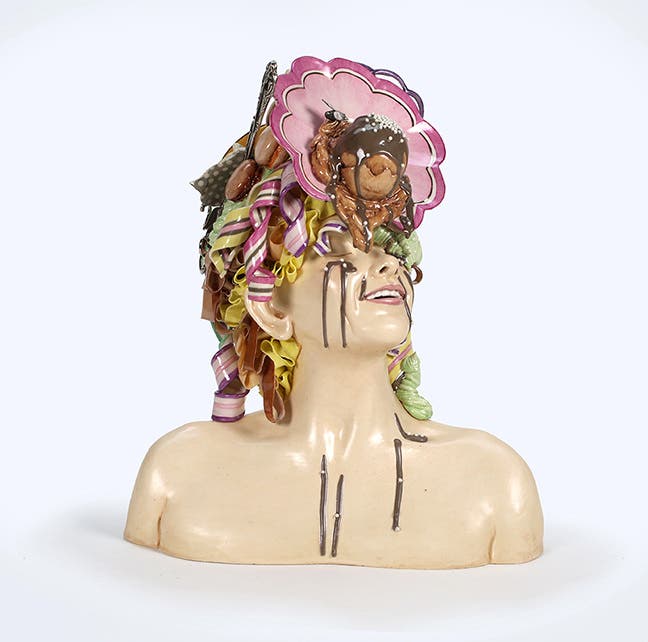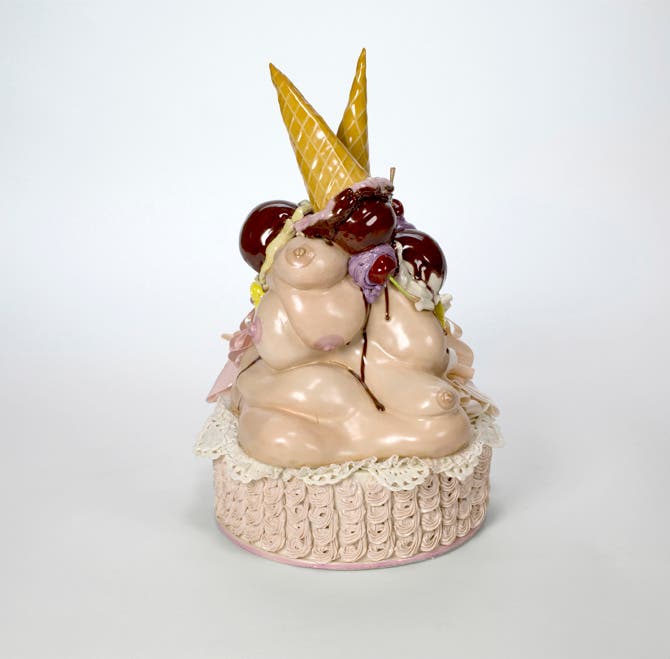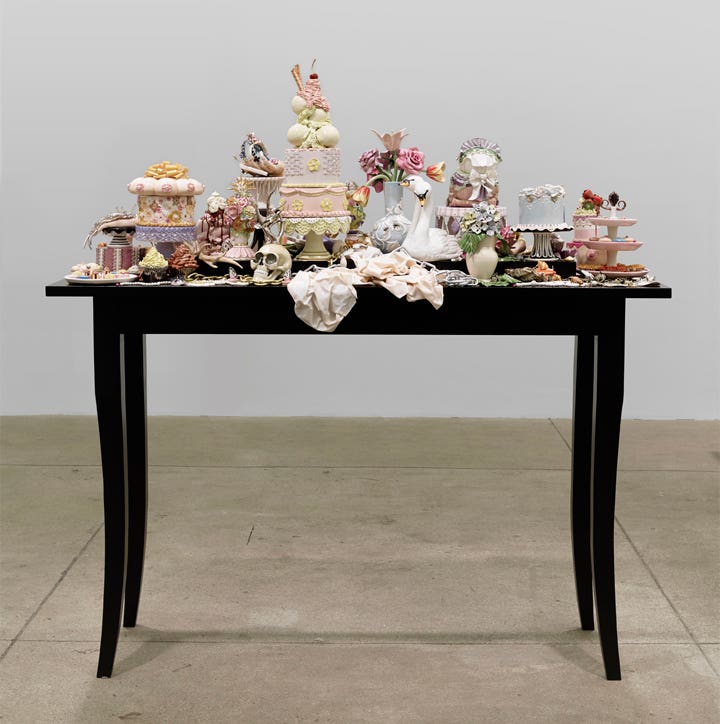
These Grotesquely Beautiful Sculptures Freeze Women and Sugar in Porcelain
Jessica Stoller’s porcelain busts comment on sweetness, femininity, and the historical dynamics of power
Porcelain figurines have long been tied to stereotypically feminine, sometimes cloyingly sweet things. Which is what makes porcelain the perfect material for artistic Jessica Stoller's gleaming statues combining food, femininity, and something more grotesque.

A crown of eclairs and a melting chocolate-ice-cream hair piece drip down onto the sweet female faces of Stoller's portrait busts, making an explicit connection between the usually implicit ideas of femininity, indulgence, and frivolity. The figures lick at gooey, sugary sweets with smooth porcelain skin and faces frozen into perfected objects of desire. In an interview with Mold, Stoller discusses the long history of women being "physically compared to porcelain, an unrealistic standard of perfection, homogeneity, and whiteness."

Her pieces seem also to nod to the long and fraught history of sugar as a tool of human fantasy—and enslavement. As Sidney Mintz articulates in his seminal book Sweetness and Power, sugar's use as a spice and a medicine declined as Europeans consumed it in larger and larger quantities, primarily because of slave labor on sugar cane plantations in the new colonies. The proliferation of sugar and sweets over the past several centuries has been, as Mintz puts it, "the direct consequence of... the exercise of power."

The pastel, almost ghostly desserts in Stoller's sculptures cuttingly comment on that costly abundance of sugar and its feminization over time. In a recent interview, Stoller says she is interested in "the ideas of the 'feminization' of sugar and how once ubiquitous, it was no longer tied to wealth and male power. It became 'feminized.'"
Keep Reading
Continue to Next Story










